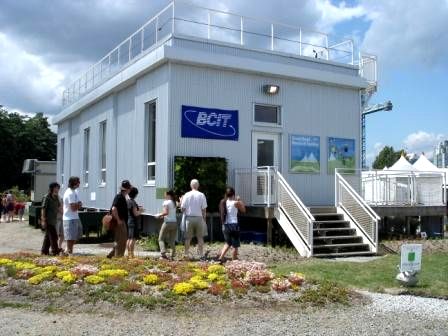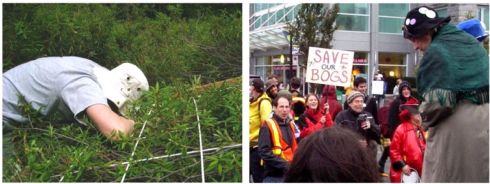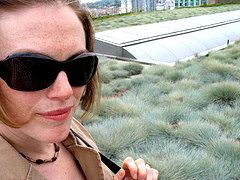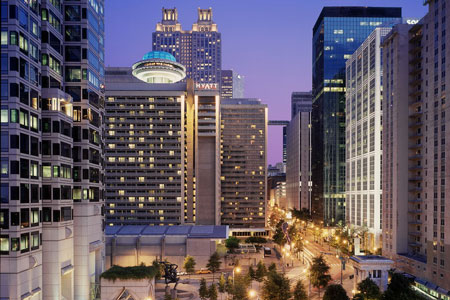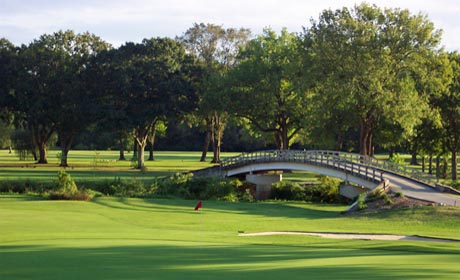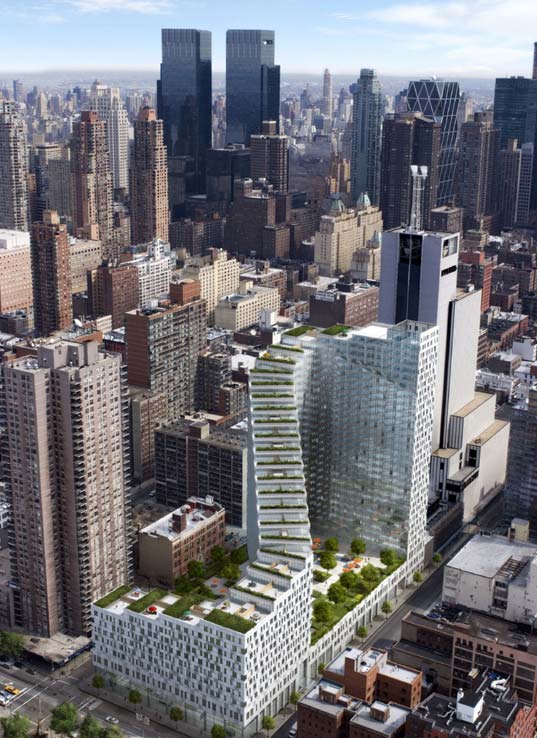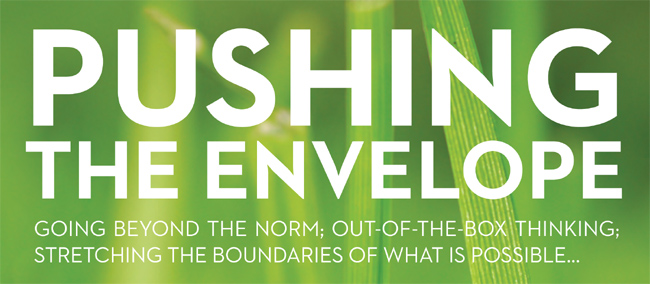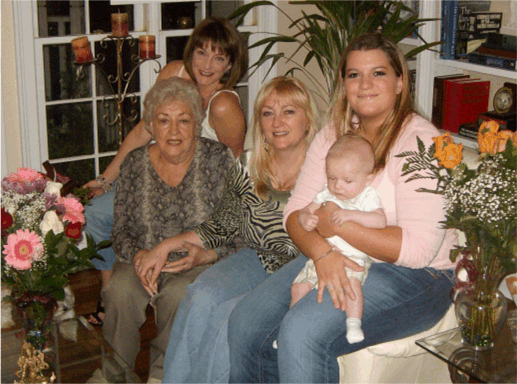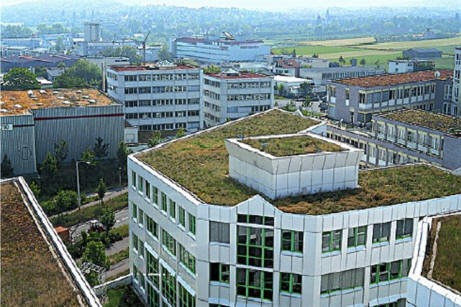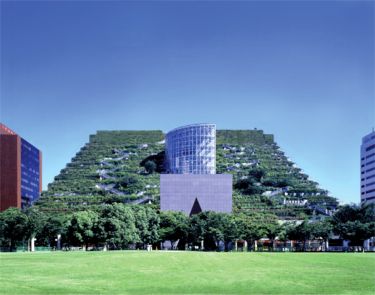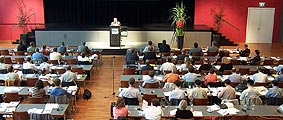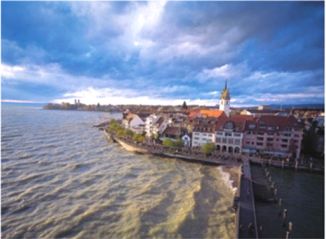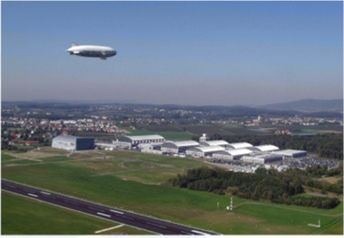I had the pleasure of interviewing Jeff Bruce, president of Jeffrey L. Bruce & Company, Chair of Green Roofs for Healthy Cities (GRHC) and the GRHC Training and Accreditation Committee which developed the Green Roof Professional – or GRP – Accreditation program, last week on May 19, 2009. Jeff and many others have devoted countless hours to developing a rigorous and comprehensive offering to the marketplace, and I wanted to learn more about the program itself as well as Jeff and his company.
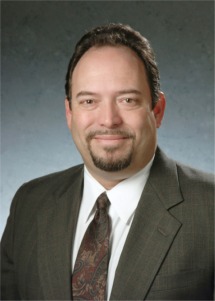
Jeffrey L. Bruce, FASLA
Jeffrey L. Bruce & Company has been around for close to 30 years and has a strong reputation with projects involving landscape architecture, comprehensive master planning, site design, recreation planning, urban design and more – offering design and specialized technical support including irrigation engineering and green roof technology.
Linda: Jeff, please tell us about your Company’s program as a professional firm – its overarching mission and goals, and how sustainability fits in?
Jeff: Well, we’re a bit of a unique firm in so far as in the past we’ve incorporated scientists and particularly agronomy in our practice area which gave us a bit of a technology focus. So we supply other landscape architectural groups, as well as architects and engineers, highly specialized services and green technologies, greenroofs and things of that nature. We have a nationwide practice that helps support that little niche we’ve been fortunate to find.
Linda: I did notice that you’re definitely national in scope and your company has been involved with many award-winning greenroof projects such as the Lurie Garden in Millennium Park, Soldier Field, and more. Can you briefly describe some of these experiences?
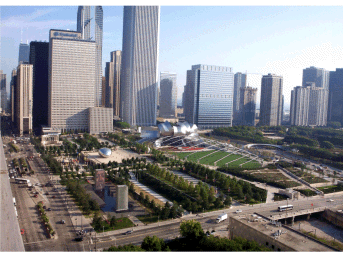
Millennium Park, Chicago
Jeff: Yes, they’re some of the more rewarding projects we’ve ever worked on. At Lurie Garden we were the irrigation consultant and did some soil consulting for Gustafson Guthrie Nichol Ltd., the lead landscape architects. That was a very beautiful project, as well as the North Burnham Park renovation at Soldier Field where we did all the soil consulting, turf consulting, and green roof consulting for Peter Schaudt’s office. We’ve also had three other greenroof awards for projects we’ve been fortunate enough to work on, so we’ve been able to find the right clients that allowed us to work on these exceptional projects.
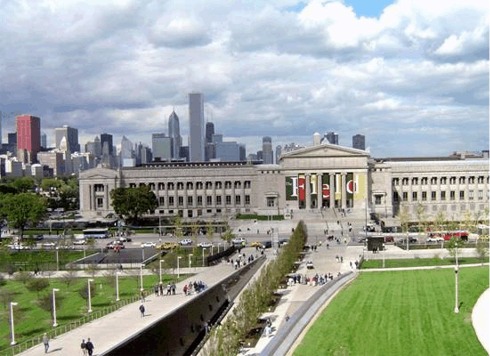
Soldier Field, Chicago
Linda: You’ve had a lot of wide array of awards and honors, so kudos to you and your firm.
Jeff: It’s finding the right client that wants to do the right project and gives us a little latitude to be creative.
Linda: True, and I always tell people I think that it’s up to us as designers to inform our clients, to let them know all the possibilities that are out there.
Jeff: We also have a phrase, “You can’t save an owner from himself!” So having the right combination is certainly a blessing when it comes to assembling a team and getting the right individuals involved in it.
Linda: The 7th Annual Greening Rooftops for Sustainable Communities Conference is coming up next week, and Atlanta will offer the inaugural Green Roof Professional Accreditation test on June 5. The ad says that “by 2013, the overall green building market is forecasted to more than double. Be ready to embrace these changing times and become a recognized professional by taking the Green Roof Professional Accreditation Exam.” Before we get into the program itself, though, how did you first become involved with Green Roofs for Healthy Cities?
Jeff: Well, it goes back probably 6 or 7 years – when we submitted an abstract for the Washington, D.C. conference and the abstract at the time was “The Weakest Link in the Delivery of Green Roof Projects.” It got the attention of the executive director, Steven Peck, who at the time was looking for someone to chair an implementation workshop which was the 201, so he tracked me down and asked me if I’d chair that taskforce to write the GRHC 201 Implementation Course.
Linda: Now that you’ve given me the genesis of your participation, how about a little bit of the process you and the team experienced – the vision and collaboration.
Jeff: It was quite an extensive process in so far as developing the course work and the manuals, all four courses, and then the first step in the GRP process was an occupational analysis by a task force established in 2005. I believe about 30 professionals met in Toronto and outlined all of the needs, skills and knowledge base that a green roof professional would require, and out of that came the occupational analysis which ended up weighting the importance of each of those pieces of knowledge that a professional would possess in that process. Then from that was the actual test accreditation exam committee that was assembled, and another 30 or 40 people at the Baltimore Conference sat down for an extra day with the industry experts and wrote test questions for the exam. Prometric was the group that assisted us with developing the test. They did a little training and then they reviewed all of the questions for accuracy and appropriate technical formatting.
The pool of test questions was brought back to the committee, and they went through each question one by one; a couple hundred test questions were narrowed down to the most logical choices. Final questions went back through another Prometric review. There was a third review of the test questions with another select group of technical experts, and after about 18 months of development we’ve gotten to the point that we’re now prepared to roll out the test and have really become comfortable on the validity of the questions and the type of information being used for the exam.
Linda: Was there any input from other organizations or associations?
Jeff: There was a large peer review of all of the course material content, which really serves the basis of the GRP exam. There was also a number of individual people in particular expertise areas of the industry that were targeted as independent peer reviewers for us. We looked at the roofing industry, the roofing manufacturing and landscape contracting, roofing consultants and landscape architects, and assembled a team of peer reviewers that went through the process and gave us really good input to further clarify the questions and content.
Linda: I was wondering if it was hard to get buy in from fellow colleagues, or if you encountered any resistance from any particular contingents in the industry?
Jeff: Believe it or not, not really. There is always this discussion and debate about accreditation and self-regulation. I think everyone in the industry recognized the value of education and having a designation that helps the public understand that this particular individual has a certain understanding of the course material that would provide them a qualification in the marketplace.

Left to Right: 1992: Ocean Houses at Post Ranch Inn, Big Sur, CA; 1995: Vancouver Public Library (Library Square Building), Vancouver, BC, Canada; 1997: The GAP Headquarters, 901 Cherry, San Bruno, CA
Linda: Here in North America, we’ve been designing modern greenroofs since the mid 1990’s and as a result we have millions of square feet on roofs greened already. Some people might say this program is unnecessary, especially to those who have been designing these living roofs, and that it’s simply a justification to promote the professional association and make some money. I know the GRP is a measure of knowledge of established best practices, and that with the designation we can distinguish ourselves in the marketplace as well. Why do you believe that the greenroof industry needs an accreditation program now?
Jeff: Green roofs are somewhat unique as a practice area because they entail such a wide variety of disciplines that it’s very difficult or virtually impossible for any individual to be an expert in every aspect of the industry.
Linda: I agree!
Jeff: We’ve sort of coined the phrase that the green roof industry is complemented by two halves of the equation – the black arts and the green arts – and so when we’re looking at the accreditation program, we had to look at those skills and competencies that are required in order to understand the delivery process and not necessarily trying to test a roofer on Latin species of Sedums or a horticulturalist on the melting point of a certain asphaltic roofing compound. So because of this wide range of knowledge, I think the GRP designation facilitates the ability of the public to understand how to apply these types of green technologies.
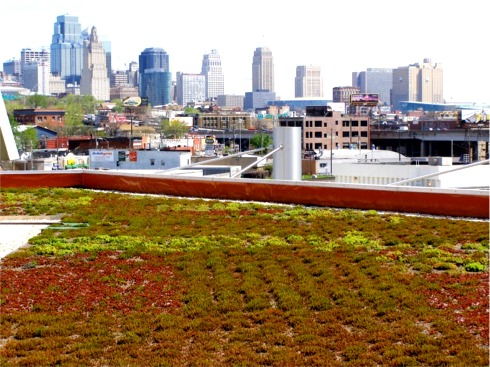
Boulevard Greenroof by Jeffrey L. Bruce & Company
Again, it is a voluntary program in that those who choose not to participate will still be able to practice in the field, so it’s not an obstacle for them. From my perspective, it is a celebration of a technical body of knowledge an individual holds.
Linda: Well, that’s a good way to look at it.
Jeff: It is sort of a personal badge of commitment that we value this type of technology to the point that we’re willing to sit for the exam and to promote our understanding of it. If you look at all other accreditation programs, they’ve run into many of the same criticisms that they’re a self-promotion vehicle and that they are self regulating a minority of individuals. If you follow other programs over a period of time, you will find that the association side and the accreditation side typically become separate organizations at some point in the future.
We have seen that through ASLA (American Society of Landscape Architects) and CLARB (Council of Landscape Architectural Registration Boards), and even with the USGBC (U.S. Green Building Council); they’ve migrated to two associations as the accreditation program gained momentum. Programs also gain sophistication and complexity. In the beginning the association is a strong support component and nurturing component in order to get an accreditation program on its feet and to get it widely accepted into public domain.
Linda: Yeah, I agree with you. What types of companies or professionals would you like to see come on board?
Jeff: We did not try to restrict anyone that is interested and capable of demonstrating sufficient knowledge about this to sit for the exam and become accredited. I think it would require a certain degree of knowledge and background about the construction industry and the construction delivery process in order to be successful. It tends to be a logical choice for architects, engineers, roofing consultants, roofing manufacturers, landscape contractors that have an interest in green roofs – or general contractors, building management, those types of individuals that have an understanding and sequencing of the construction process.
This knowledge base that we’re looking at is really specialized applied knowledge, so it’s an overlay of what an individual might already need to understand about contracting law, projects, understanding critical path of construction sequencing and how to measure performance and success in the field. So, although we didn’t limit who takes the exam, we tried to work off some industry assumptions and direct the materials so that it was specifically for unique aspects of green roofs in the construction market.
Linda: Getting back to landscape architecture, the profession encompasses a broad field, embracing a wide range of interests, with many of us gravitating towards one particular area, greenroofs, for example. As a landscape architect, do you feel specialization will eventually kill or possibly dilute our profession?
Jeff: I’ve been involved in ASLA as a trustee for many years, and have a long involvement in ASLA. I understand the dichotomy involved in specialization. Over the years landscape architects have always struggled to define their identity because we are so diverse and we practice in so many different phases in society. In a technologically increasing community and environment, it is absolutely necessary that landscape architects and other professions maintain higher levels of specialization as certain aspects of the industry get more and more complex. I think that’s a natural aspect. When I look at landscape architects, I am very hopeful that because of their common basis of understanding and education, they’ll still be able to maintain a dialogue and a connection with landscape architecture even as the specialties continue to get more granular and complex.
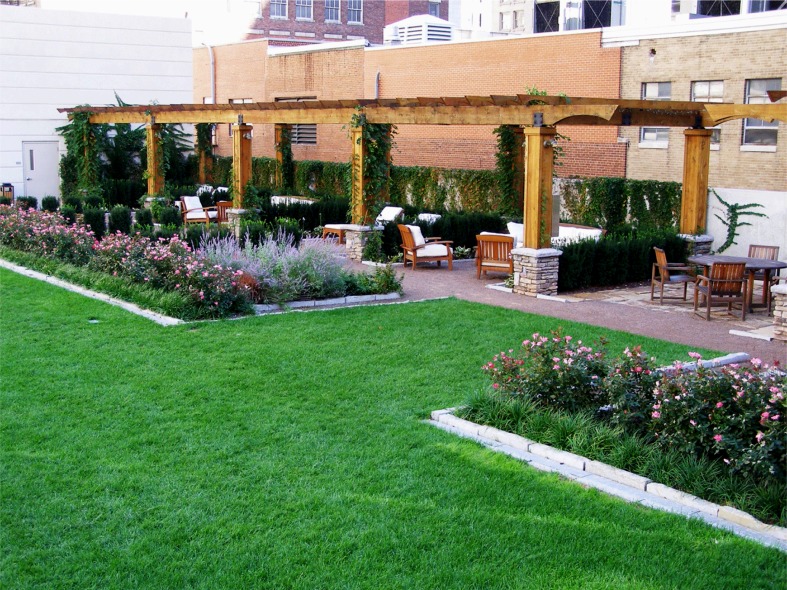
909 Walnut in Kansas City, MO by Jeffrey L. Bruce & Company
I view landscape architects collectively as contextualists in that we, in solving problems, seek out other professions. We seek out connections with the past, seek out connections with ecology, place culture and try to mend and heal places. This reaching out as a popular culture facilitates us working as teams and embraces a recognition of diversity within the profession.
Actually, 30- 40% of our consulting work is with other landscape architects, and it is probably the most rewarding work we do because there is an affinity of understanding. There’s a similar basis of attempting to resolve the project. Specialization is the way for us to get better at what we do but still maintain a common core of landscape architecture. I’m hopeful, so very hopeful, that we will be able to continue to embrace other specializations and keep our identity under the umbrella of landscape architecture.
Linda: Well, I have to say that was very eloquent! I can’t think off the top of my head like that!
Jeff: The way I got to be fellow (FASLA) is I got involved in Missouri licensure of landscape architects, and we fought a very, very tough battle that took close to 12 years to get the legislation passed. As a result we learned every tactic in the world, politically, every backroom maneuver, and we got so good at it that I was appointed to the registration assistance team at ASLA national. As part of the registration assistance team, we travelled around and gave legislative workshops for other states. I was involved with six states that gained licensure. We dealt with turf battles, strategy of defining work, specializations, and tiered accreditation of licensing. I’ve been thinking about it for about 25 years. So my elegant statement has been constructed over a long time.
Linda: Then you have a good memory!
Jeff: Well, yeah, and there’s a few things you’d like to forget about that process – I always equated it to getting your cuff caught in a piece of machinery and it just dragged you through the machinery. During the process it was like I never thought if I’d joined this committee it meant a 25-year commitment.
Linda: Right, it kind of takes over your life. I know people on various GRHC committees who would say the same thing!
Jeff: Exactly. What attracted that organization to me, I think, was the interesting perspective about licensure and accreditation and what that might mean. The whole opportunity to look at not a singularly educated vocation, but a very multi-disciplinary organization to establish a knowledge base of information was intriguing to me. It’s very similar to the USGBC model but not as expansive.
Linda: What unique attributes do you think landscape architects will offer as a Green Roof Professional?
Jeff: Good question. Well, I alluded to it a little bit previously, which was their propensity for team management and team building, working with other professionals. The rooftop is an extremely hostile environment in which to try and grow vegetation, and more realistically in trying to create sustainable, restorative ecosystems. I think the landscape architects’ skill set is perfectly aligned with those unique challenges that occur on the roof, working with constructed materials, working with natural systems, working with water, harvesting soils, and all of those things provide very unique attributes for landscape architects.
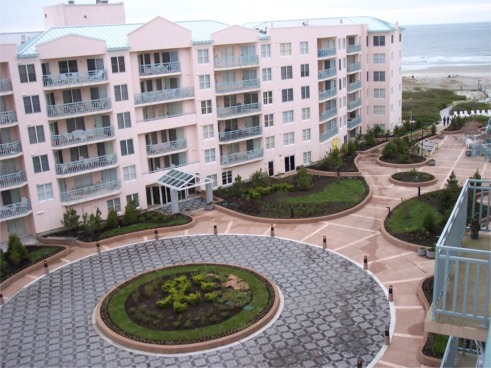
Seapointe North Plaza, by Jeffrey L. Bruce and Company
I think each of the professions that we have targeted and involved in the process also provide those very unique but different attributes. Roofing consultants – there is an enormous amount of technical data and expertise required in waterproofing of structures, and roofing details and flashing/counterflashing details, for example.
Linda: Right, and that’s going to be my hardest area to take – the 301!
Jeff: Well, I can tell you that the trepidation is equally split – if you’re part of the green arts, you fear the black arts, and if you’re part of the black arts you equally fear the green arts. But I sincerely hope that everyone that comes out of the exam really feels that the material has been well vetted, has been well thought out and then represents a reasonable representation of the skill set we need in the generalist form. I think we’ll strike the appropriate balance between those two divergent areas of specializations.
Linda: Getting back to the Accreditation Program, Green Roofs for Healthy Cities is basing the GRP exam on the four Green Roof Courses, the 101, 201, 301, and 401, but is it a requirement that people have taken these classes already or can anyone just walk in and wing it?
Jeff: Anyone could, in fact, sit down and take the test if they so desire. We recognize that some people may not have the opportunity in their schedule to sit for all the courses throughout the year, so the course manuals are also available for purchase if you wanted to read through them. As part of the legal defensibility of the exam, we had to have citable references for each of the questions and all of the questions came out of the course materials.
Linda: Can you give us some of the specifics of what to expect on the exam, like the number of questions and how it long it might take?
Jeff: There will be 100 questions, and we’re allowed 2 hours.
Linda: And Green Roofs for Healthy Cities is using the exam from the launch here in Atlanta as the benchmark of sorts for future tests, is that correct?
Jeff: Yes, part of the process that we will go through with Prometric is a validation of the test questions by the first hundred or so exam takers. So there would be, again, another quality assurance process whereby we would look aggregately at all the exam questions and see if there’s an anomaly in answers and responses so that we can make it again as fair and as defensible as possible.
Linda: Can you give our readers any pointers or last minute advice before we take the test?
Jeff: Well, I think, again, we tried to focus on those pieces of information that are most valuable for the professional as they facilitate teaming and delivery of green roofs. One of the very important aspects of that was certainly the best management practices that were called out in each of the manuals. So the best management practices are areas where we focused importance on, and you’ll see a number of questions that emerge from those particular recommendations.
Linda: Very good, I haven’t signed up yet, just because I’m always late for everything!
Jeff: Well, there’s always a percentage of the population that are like that so we’re looking at a really good representation of “first adopters” we’re calling them that are going to come out and represent the profession. It should be noted that there are going to be three additional exams that will be given around the country. You can check the GRHC website for the locations and times of the other exams.
Linda: Anything else?
Jeff: I would just encourage everyone to come down to Atlanta and the conference – we’ve got some extraordinary tracks that we’re looking at, one of which is food production on rooftops – rooftop agriculture – which I think is going to be a significant emerging market for us and it should be a lot of fun.
I appreciate the opportunity!
Linda: Very good, Jeff, and it really has been my pleasure to speak with you today!
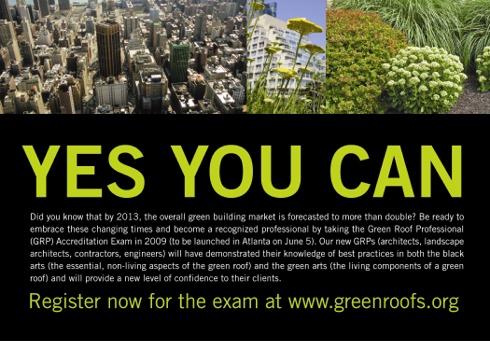
For more info on the GRP, visit the FAQ’s section from Green Roofs for Healthy Cities. I hope many professionals from multi-disciplinary fields take the challenge and get their Green Roof Accreditation – I’ll be there, too:
The Green Roof Professional (GRP) Accreditation Exam will be held on Friday, June 5, 2009 at the 7th Annual Greening Rooftops for Sustainable Communities Conference from 4:00 – 6:00 pm at the Conference venue, the Hyatt Regency Hotel, Atlanta, in the Hanover Room, C-E.
Happy Greening and Test Taking!
~ Linda V.
 Greenroofs.comConnecting the Planet + Living Architecture
Greenroofs.comConnecting the Planet + Living Architecture
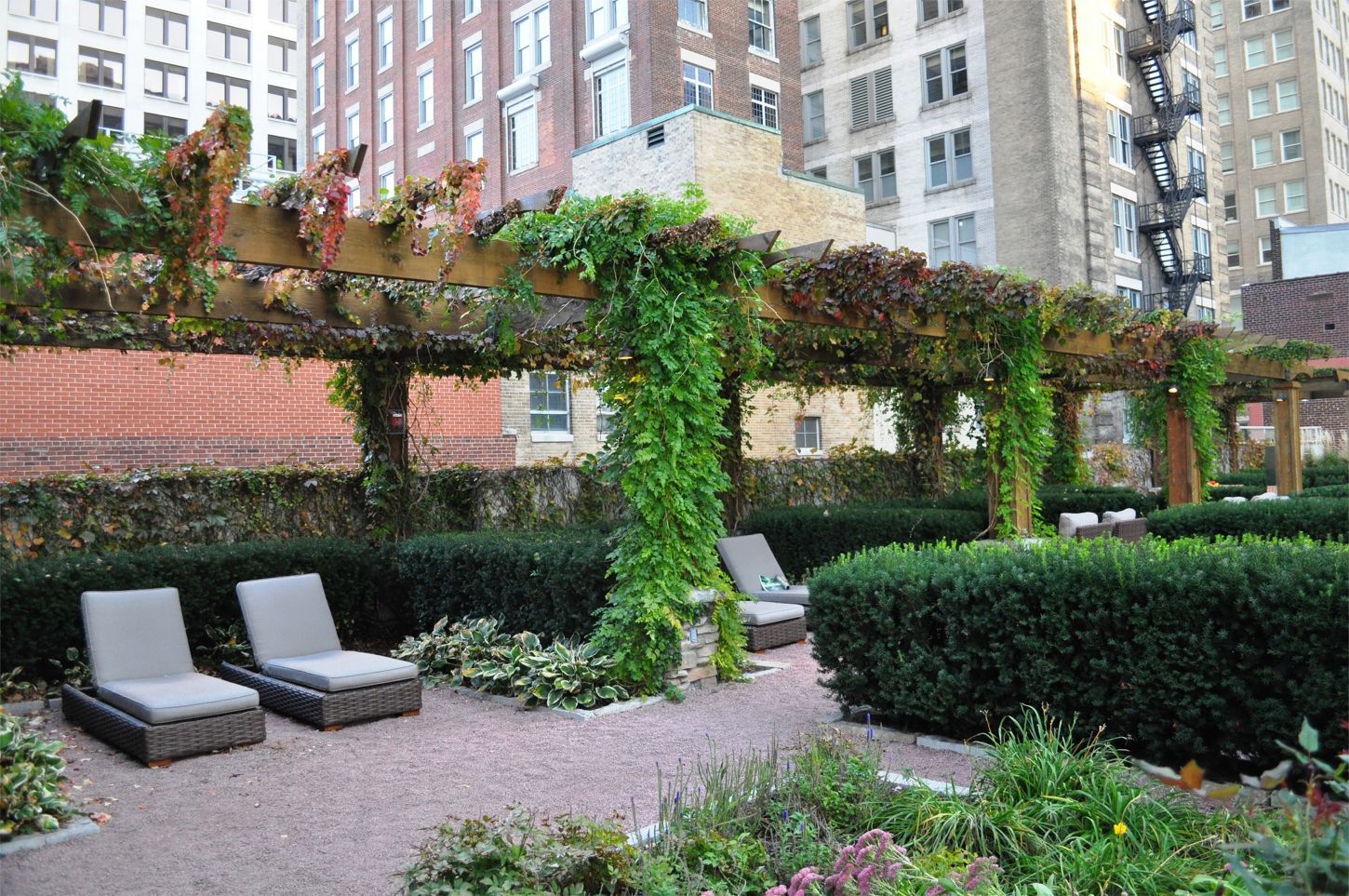
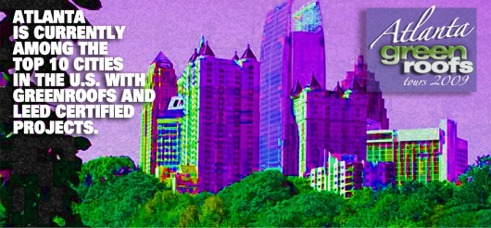
 1. Viewpoint: 855 Peachtree Street NE, Atlanta. Twenty-six stories high, the Viewpoint offers luxury condo residences and over 50,000 sf of eclectic retail located in Atlanta’s trendy Midtown district. From here you can see amazing views of the city and other greenroofs, including those on the equally stunning Spire Midtown (as well as their green walls) and the Federal Reserve Bank of Atlanta Building greenroof, too.
1. Viewpoint: 855 Peachtree Street NE, Atlanta. Twenty-six stories high, the Viewpoint offers luxury condo residences and over 50,000 sf of eclectic retail located in Atlanta’s trendy Midtown district. From here you can see amazing views of the city and other greenroofs, including those on the equally stunning Spire Midtown (as well as their green walls) and the Federal Reserve Bank of Atlanta Building greenroof, too.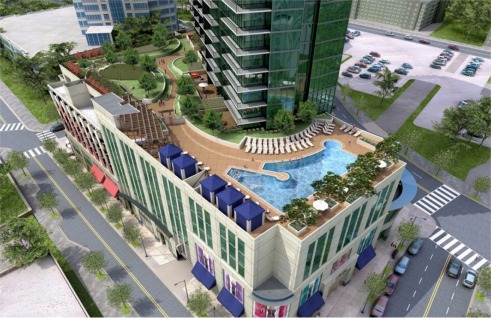
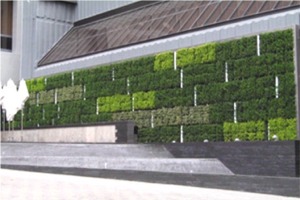 3. The W Hotel: 188 14th Street, NE, Atlanta.
3. The W Hotel: 188 14th Street, NE, Atlanta. 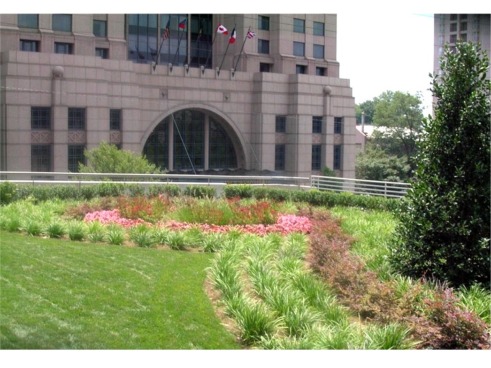
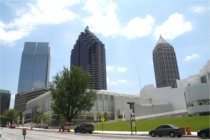
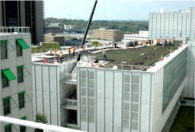 5b. Bunzl Administration Center of the High Museum of Art: 1280 Peachtree Street, N.E., Atlanta. This greenroof is the largest modular system installed to date in the metropolitan Atlanta area. The 6,680 square foot greenroof sets an example of how vegetated green roofs would benefit the City of Atlanta by cleaning and reducing stormwater runoff, reducing the urban heat island effect, reducing energy consumption, extending roof life and improving air quality.
5b. Bunzl Administration Center of the High Museum of Art: 1280 Peachtree Street, N.E., Atlanta. This greenroof is the largest modular system installed to date in the metropolitan Atlanta area. The 6,680 square foot greenroof sets an example of how vegetated green roofs would benefit the City of Atlanta by cleaning and reducing stormwater runoff, reducing the urban heat island effect, reducing energy consumption, extending roof life and improving air quality.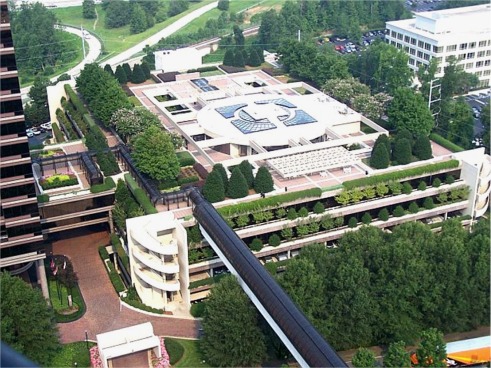
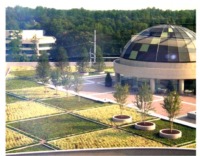 1b. Northpark 500: 1100 Abernathy Rd NE Atlanta, GA. Although Northpark 500 has been around since 1989, the garden roof was newly waterproofed and a new greenroof system was applied in 2007. The $6 million rehabilitation project involved removing the building’s 56,000 square-foot green roof and replacing it with a high-performance waterproofing membrane combined with lightweight, low profile, green roof technology. A fully landscaped roof garden with outdoor dining terraces and a walkway connection to the office tower is one of the many unique features at the 18-story 500 Northpark office tower.
1b. Northpark 500: 1100 Abernathy Rd NE Atlanta, GA. Although Northpark 500 has been around since 1989, the garden roof was newly waterproofed and a new greenroof system was applied in 2007. The $6 million rehabilitation project involved removing the building’s 56,000 square-foot green roof and replacing it with a high-performance waterproofing membrane combined with lightweight, low profile, green roof technology. A fully landscaped roof garden with outdoor dining terraces and a walkway connection to the office tower is one of the many unique features at the 18-story 500 Northpark office tower.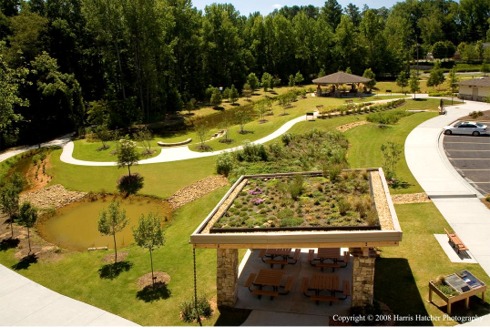
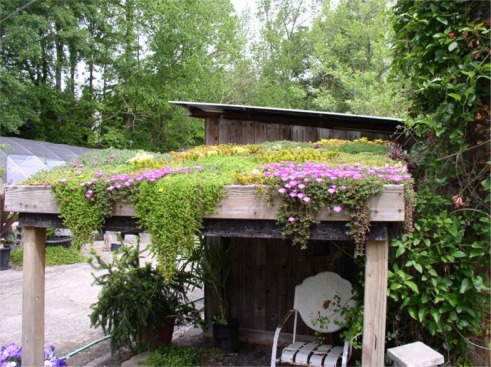
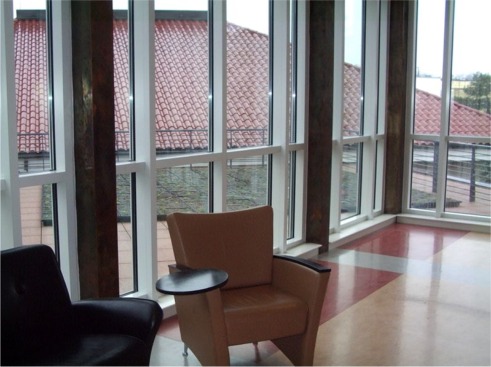
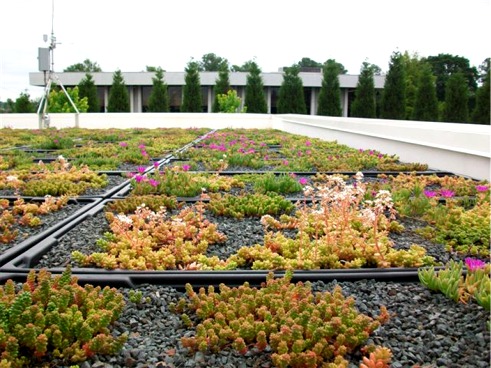 2. ASHRAE Headquarters: 1791 Tullie Circle, N.E., Atlanta GA. The American Society of Heating, Refrigerating and Air-Conditioning Engineers advances technology to serve humanity and promote a sustainable world. Their newly renovated headquarters provides a healthy and productive environment for the staff and showcase ASHRAE technology while demonstrating the organization’s commitment to sustainability. The Daikin Sustainability Garden is a vegetative roof garden above the new ASHRAE Foundation Learning Center.
2. ASHRAE Headquarters: 1791 Tullie Circle, N.E., Atlanta GA. The American Society of Heating, Refrigerating and Air-Conditioning Engineers advances technology to serve humanity and promote a sustainable world. Their newly renovated headquarters provides a healthy and productive environment for the staff and showcase ASHRAE technology while demonstrating the organization’s commitment to sustainability. The Daikin Sustainability Garden is a vegetative roof garden above the new ASHRAE Foundation Learning Center.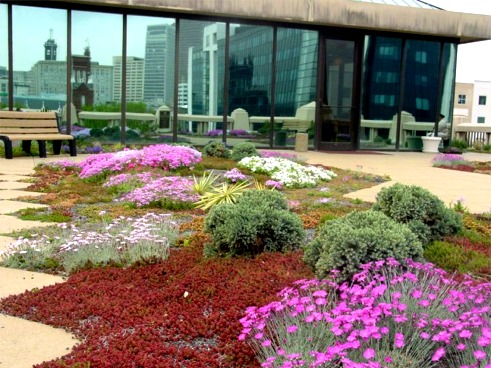
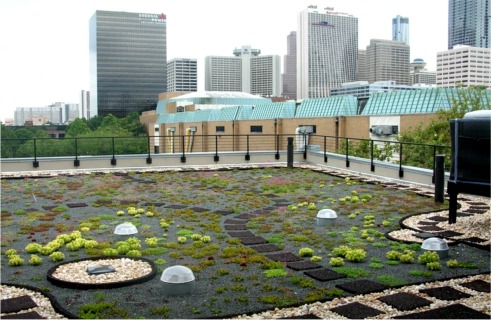
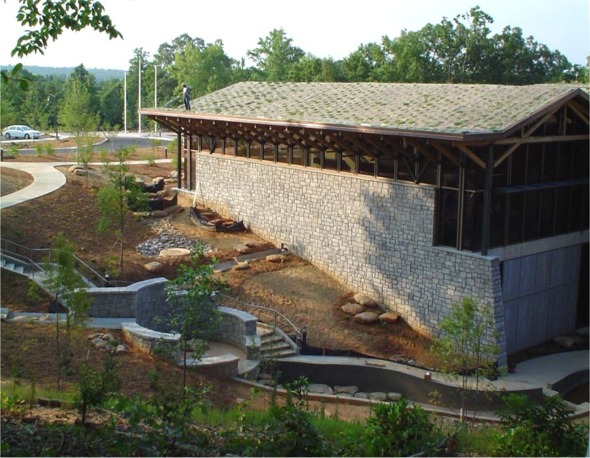
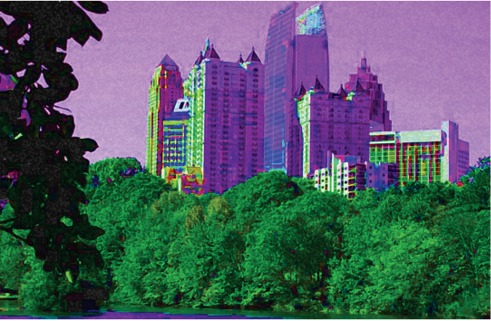
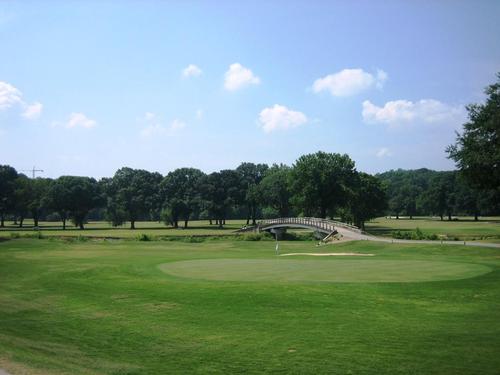
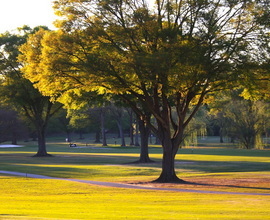
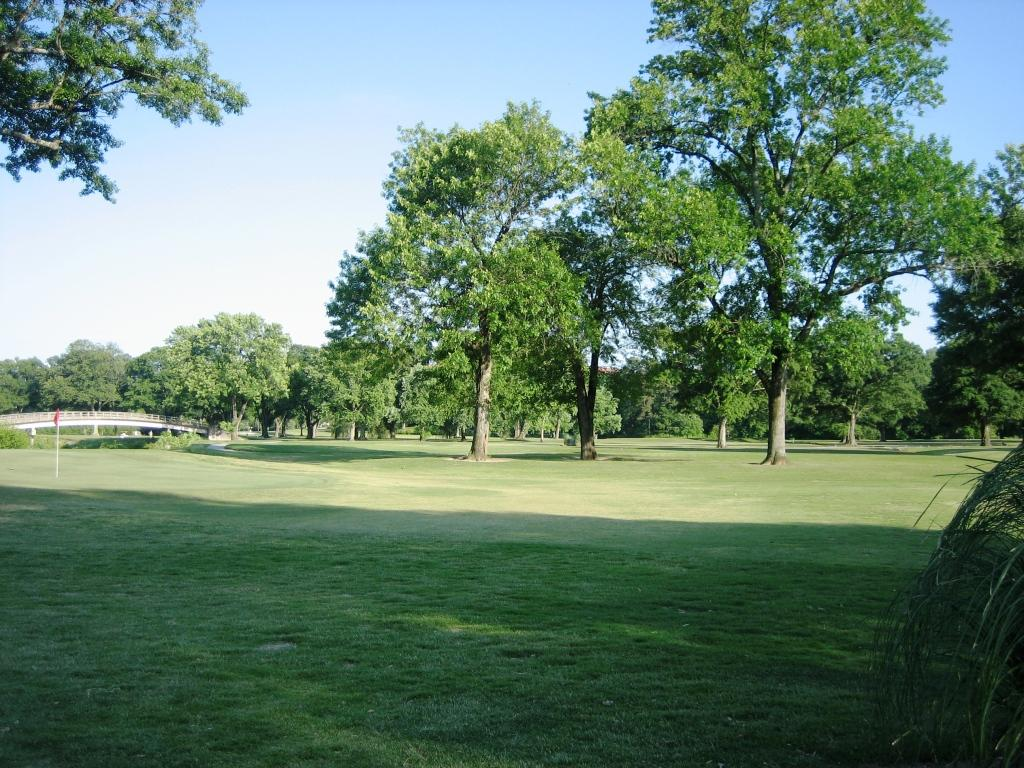
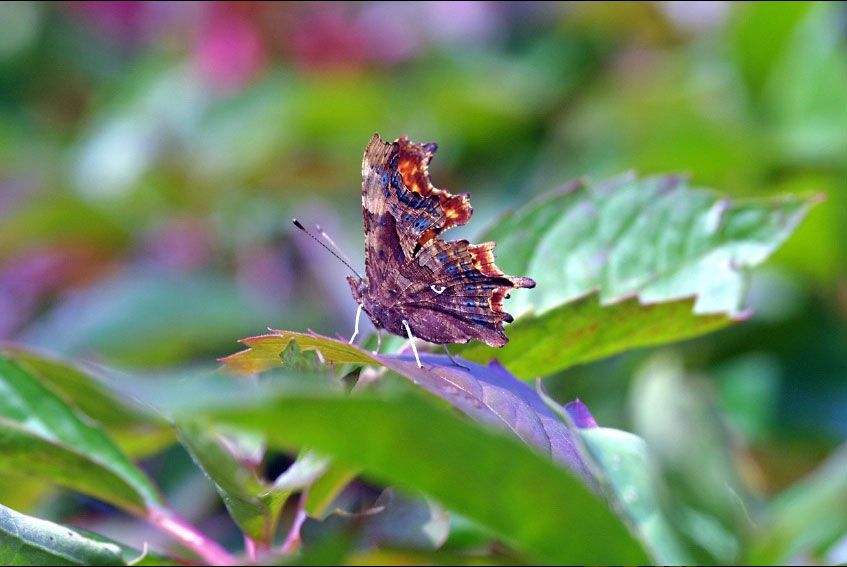
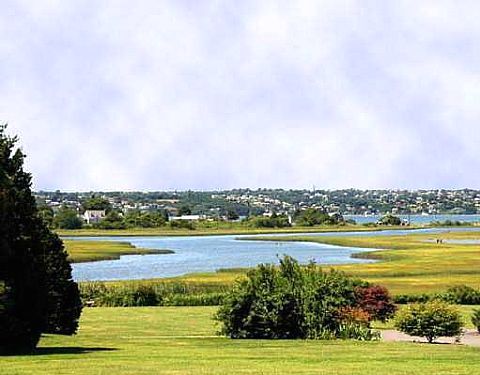
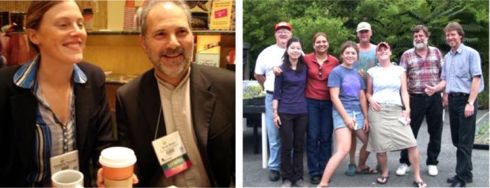
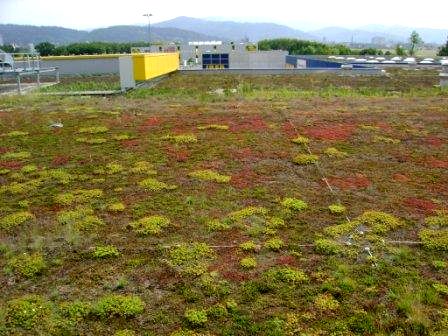
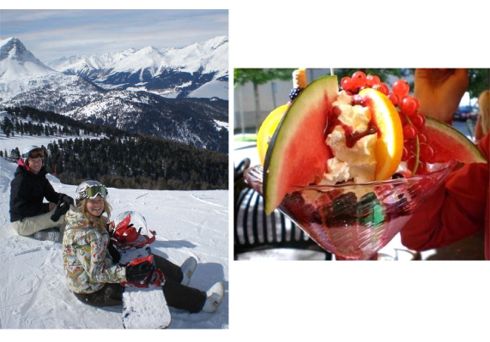
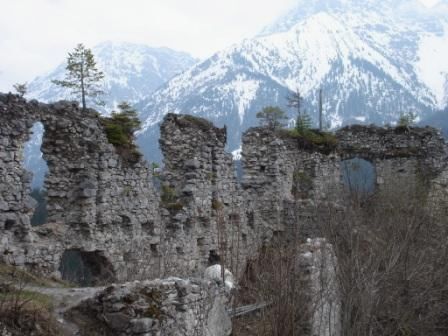


 Still, recalling the resemblance that pure Sedum roofs bear to deserts, adding small elements to enhance the site’s diversity doesn’t take much and can make a big difference to the ecological value of the site. Pieces of wood, topographic variation, and so on. Using locally available materials and seed would seal the deal. The key is to have the knowledge and support on-hand for site-specific inputs.
Still, recalling the resemblance that pure Sedum roofs bear to deserts, adding small elements to enhance the site’s diversity doesn’t take much and can make a big difference to the ecological value of the site. Pieces of wood, topographic variation, and so on. Using locally available materials and seed would seal the deal. The key is to have the knowledge and support on-hand for site-specific inputs.
